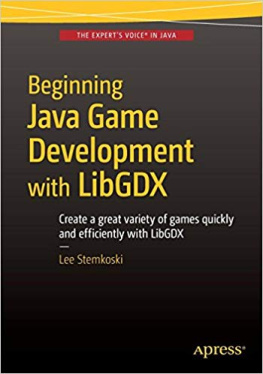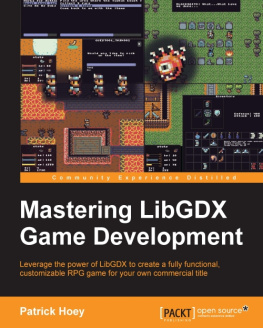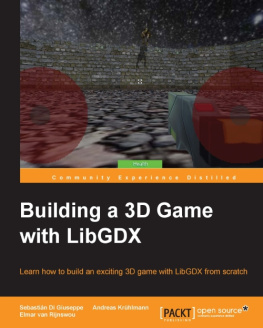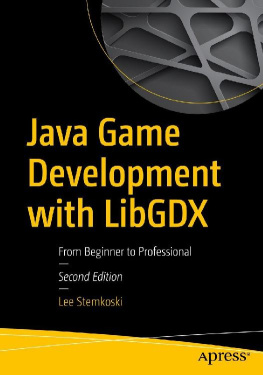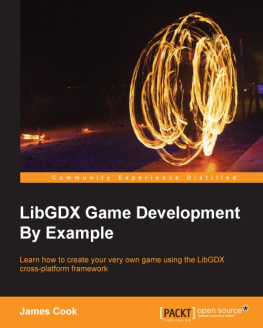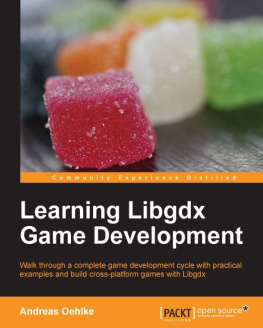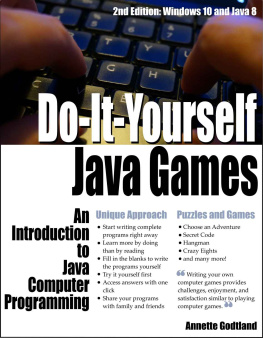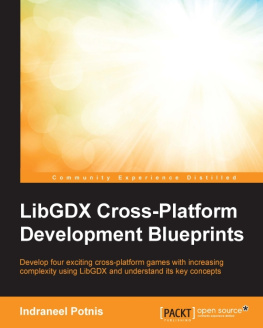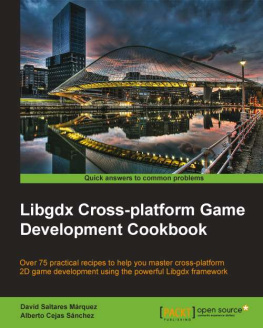Lee Stemkoski - Java Game Development with LibGDX: From Beginner to Professional [Lingua inglese]
Here you can read online Lee Stemkoski - Java Game Development with LibGDX: From Beginner to Professional [Lingua inglese] full text of the book (entire story) in english for free. Download pdf and epub, get meaning, cover and reviews about this ebook. year: 2018, publisher: Apress, genre: Computer. Description of the work, (preface) as well as reviews are available. Best literature library LitArk.com created for fans of good reading and offers a wide selection of genres:
Romance novel
Science fiction
Adventure
Detective
Science
History
Home and family
Prose
Art
Politics
Computer
Non-fiction
Religion
Business
Children
Humor
Choose a favorite category and find really read worthwhile books. Enjoy immersion in the world of imagination, feel the emotions of the characters or learn something new for yourself, make an fascinating discovery.
- Book:Java Game Development with LibGDX: From Beginner to Professional [Lingua inglese]
- Author:
- Publisher:Apress
- Genre:
- Year:2018
- Rating:4 / 5
- Favourites:Add to favourites
- Your mark:
Java Game Development with LibGDX: From Beginner to Professional [Lingua inglese]: summary, description and annotation
We offer to read an annotation, description, summary or preface (depends on what the author of the book "Java Game Development with LibGDX: From Beginner to Professional [Lingua inglese]" wrote himself). If you haven't found the necessary information about the book — write in the comments, we will try to find it.
Major updates in this edition include chapters covering advanced topics such as alternative sources of user input, procedural content generation, and advanced graphics. Appendices containing examples for game design documentation and a complete JavaDoc style listing of the extension classes developed in the book have also been added.
What You Will Learn
- Create 12 complete video game projects
- Master advanced Java programming concepts, including data structures, encapsulation, inheritance, and algorithms, in the context of game development
- Gain practical experience with game design topics, including user interface design, gameplay balancing, and randomized content
- Integrate third-party components into projects, such as particle effects, tilemaps, and gamepad controllers
The target audience has a desire to make video games, and an introductory level knowledge of basic Java programming. In particular, the reader need only be familiar with: variables, conditional statements, loops, and be able to write methods to accomplish simple tasks and classes to store related data.
Lee Stemkoski: author's other books
Who wrote Java Game Development with LibGDX: From Beginner to Professional [Lingua inglese]? Find out the surname, the name of the author of the book and a list of all author's works by series.

![Lee Stemkoski Java Game Development with LibGDX: From Beginner to Professional [Lingua inglese]](/uploads/posts/book/153997/thumbs/lee-stemkoski-java-game-development-with-libgdx.jpg)
